
In the morning of 5th November 1945 the crew of this 429 Squadron Lancaster were tasked with flying an hour long local flying exercise which involved undertaking a "George" test. After take-off at 11.04hrs the flight took them south from Leeming, Yorkshire and on their return north and they were met with poor weather to the south-west of the county. On board were at least six regular aircrew and two ground crew were also taken up for a flight. The training flight was all but complete and in all probability they would only have been in England for a few more weeks before returning home to Canada. The conditions in the Pennines in the mid-morning of this day was described as poor, with mist and low cloud covering the areas of high ground. With the test of the "George" complete the crew began to make the return flight to Leeming but as the aircraft flew on into the low cloud and the crew would appear to have become lost, having gained radio assistance from Leeming who gave them a course to fly the crew appear to have not appreciated that they were flying over high ground and began to descend to try and get a visual fix on the ground. This was against flying regulations but many aircraft flew into high ground during the War doing such actions. Unknown to them high ground lay in front of them and the aircraft descended below the level of what was the highest hill in its path. The aircraft struck the southern side of Beamsley Beacon some fifty feet from the summit at 11.56hrs and disintergrated on impact and caught fire. Four of the eight crew being killed in the impact. Of the four survivors one, Joseph Balenger, was less seriously injured than the rest, he was the one to go for help. He eventually found his way down to Black Hill Farm and was met by the owner's wife. Sgt Balenger was later taken to Ilkley Coronation Hospital with head injuries and suffering from severe shock. The aircraft was heard to fly over the area by people on the ground and upon hearing the crash many people made their way up to the crash site which took some locating in thick mist. The remains of the aircraft were eventually found and the other three survivors were taken down to waiting ambulances and then on to High Royds Hospital in Menston where it is believed they all made recoveries. Of the four fatalities, two were found outside the remains of the aircraft, it is thought that they were pulled out of the burning aircraft by the survivor before he went for help. The funerals of the four crew killed took place at Harrogate Stonefell Cemetery on 12th November 1945.
Killed were:
Pilot - F/O Walter Fred Conley RCAF (J/85141), aged 25, of Winnipeg. Buried Harrogate Stonefall Cemetery, Yorkshire.
Flight Engineer - F/Sgt Arnold Emerson Stinson RCAF (R/272834), aged 20, of Harriston, Ontario, Canada. Buried Harrogate Stonefall Cemetery, Yorkshire.
Bomb Aimer - F/O Wallace Ewing Lang RCAF (J/43946), aged 22, of Sarnia, Ontario, Canada. Buried Harrogate Stonefall Cemetery, Yorkshire.
Passenger / Aero Instrument Mechanic - Cpl William John Ellis RCAF (R/153918), aged 30, of Peterborough, Ontario, Canada. Buried Harrogate Stonefall Cemetery, Yorkshire.
The survivors were:
Navigator - F/O Alan Price Coleman RCAF (J/36946), of Magrath, Alberta, Canada. Seriously injured.
Flight Engineer - F/Sgt Francis John Moran RCAF (R/291031), St.Catharines, Ontario, Canada. Seriously injured.
Passenger - LAC Reginald Embree Henderson RCAF (R/271683), of Drum Head, Nova Scotia, Canada. Very seriously injured.
Wireless Operator / Air Gunner - Sgt Joseph Patrick Belanger RCAF (R/256024). Injured.
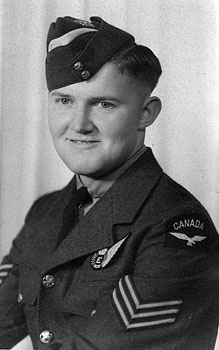
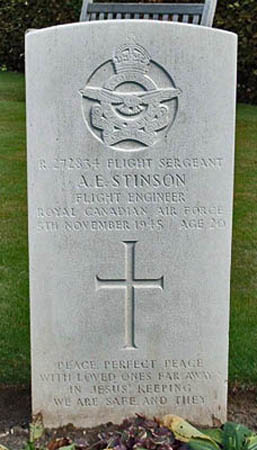
Arnold Stinson and his grave at Harrogate Stonefall Cemetery, he was born on 19th June 1925. In January 2011 I was fortunate to have been contacted by his niece, Mrs Carol Shaw, who was able to provide a wealth of information about her mother's brother. He had flown in a Lancaster to Berlin in late October 1945 where he and his crew had spent afew days before returning to base. The photograph at the top of this page shows Arnold Stinson leaning from his side of the aircraft's cockpit.
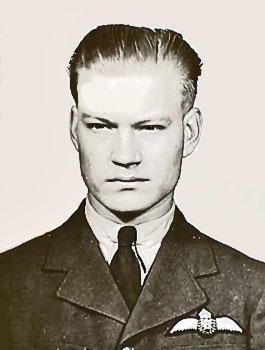

Fred Conley was born on 17th May 1920 in Winnipeg, Manitoba and was the son of Walter Conley. His mother died in 1936 and is not named on his attestation papers. He was still a student when he enlisted for RCAF service on 23rd March 1939 and served with 112 RCAF Squadron (which was possibly an Auxilliary squadron at the time). He first arrived in the UK serving as an airframe mechanic with ground crew with 110 RCAF Squadron in Ottawa and then was posted to England with this squadron where it was based at Old Sarum airfield in early 1940. He was repatriated to Canada in July 1941 and continued to serve as an airframe mechanic. He remustered as aircrew in 1943 and trained as a pilot gaining his Wings on 12th November 1943. He was later posted back to the UK in April 1944 to serve as aircrew, having further trained at 11 (O)AFU, 1531 BAT Flight and 86 OTU he was posted to 100 Squadron just before D-Day. He was then posted to 429 Squadron in June 1945 joining up with other RCAF aircrew. He received a commission to the rank of P/O on 9th May 1945. He also married in December 1944 to Megan Husbands of Brynteg, Wrexham, Denbighshire, Wales.
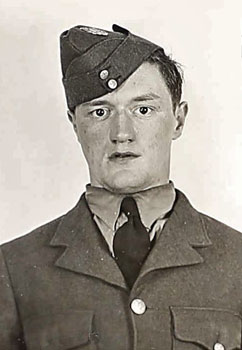
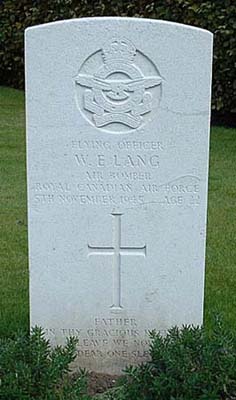
Wallace Lang was born on 4th March 1923 in Sarnia, Ontari0 and was the son of John and Mae Elizabeth (nee Wallace) Lang. He enlisted for RCAF service on 4th November 1942 in Toronto as aircrew. He received a commisison to the rank of P/O on 7th April 1944 and rose to F/O on 7th October 1944. He was posted to the UK after completing his bomb aiming basic training in Canada. On arrival in England he trained at 8 (O)AFU from 15th August 1944, 14 OTU from 3rd October 1944 and 1666 HCU at Wombleton on 30th March 1945. He only completed his training as the war was coming to an end, being posted to 433 Squadron on 8th May 1945, he then then transferred to 429 Squadron on 2nd October 1945.
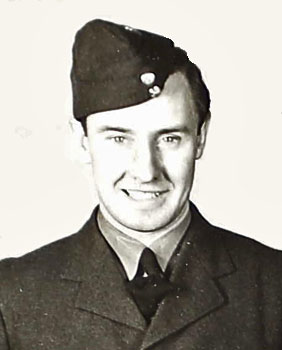
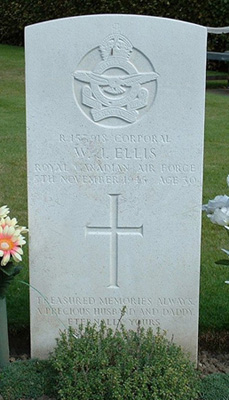
William Ellis was born on 25th June 1915 in Peterborough, Ontario to James Campbell and Mabel Ellis. From 1936 until 1938 he worked as a clock repairer and when he enlisted for RCAF service on 9th February 1942 in Toronto he stated he wished to enlist for ground duties specifically to serve as an instrument maker. Between 1938 and enlisting he owned his own company manufacturing mattresses and springs. After enlisting he undertook basic RCAF training in Canada before posting to the UK where he arrived in April 1943. Between then and the end of the War he served with 427 Squadron but spent a number of periods of attachment with No.12 School of Target Towing. At the time of his death he appears to have been serving at "63 Base" / Leeming as an instrument repairer. While in the UK he met and married his wife Margaret (nee Richardson) in early 1945. When Bill Ellis died she was living at Bungalow Farm or Inglenook, Londonderry, Leeming (which may have been the address for RAF married quarters at Leeming). At the time of his death his wife appears to have been pregnant, the birth of a baby boy named William J Ellis was registered in the Wensleydale district in the third quarter of 1946 and may well be his son.

Of the survivors Frank Moran died in 1968 in an accident when his snowmobile went through thin ice on Lake Bobcaygeon, Ontario which he was crossing at night. I thank Mr Ray Morley for kindly supplying this photograph of Frank for inclusion on this webpage. Frank Moran's step-brother Edward Morley is Mr Ray Morley's father.
Alan Coleman was born on 26th September 1924 at Magrath, Alberta, Canada. He died on 10th April 1977 at Victoria, British Columbia.
Reginald Henderson did on 8th August 1999 at Halifax, Nova Scotia.
Joe Belanger sustained back injuries which effected the rest of his life. He returned home to Canada and fathered nine children. He died in 1979. I thank his son Joe for contacting me in 2015.

My wife and I visited the crash site in March 2007. Much of what is to be found at the crash site today is believed to have been buried by the clear-up party following the crash. The site has been searched for over the decades and until only recently the only wreckage known to be located on the surface could be carried in one hand. In recent months or years however one large pit has been uncovered at the crash site and the contents of which, having been picked over by their discoverer, have been left for the elements. Having been buried for sixty years much of the alluminium remains have sadly oxidised too badly to make indentification of pieces difficult. Some of the harder metallic parts have survived in reasonable condition when found during my visit in March 2007. Many of these items were from the front end of the aircraft and there were a number of items from the flight engineers panel, alongside the remains of a Dalton computer and harness buckles, and a monkey wrench (one presumes left by the clear-up team). One question I left the site unanswered was, if this one pit was dug over and these very interesting items like these were left behind then I wonder what was dug up and taken from the site. There could well be more wreckage in the area of the crash site which has yet to be found and uncovered.


Two instrument faces found at the crash site in 2007.
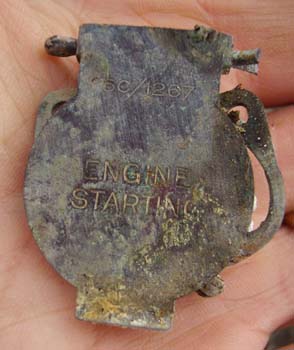
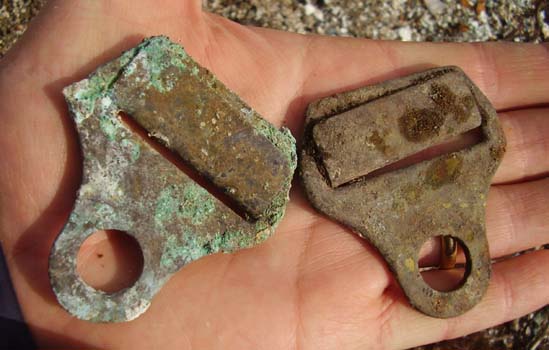
An engine start switch cover and two buckles.